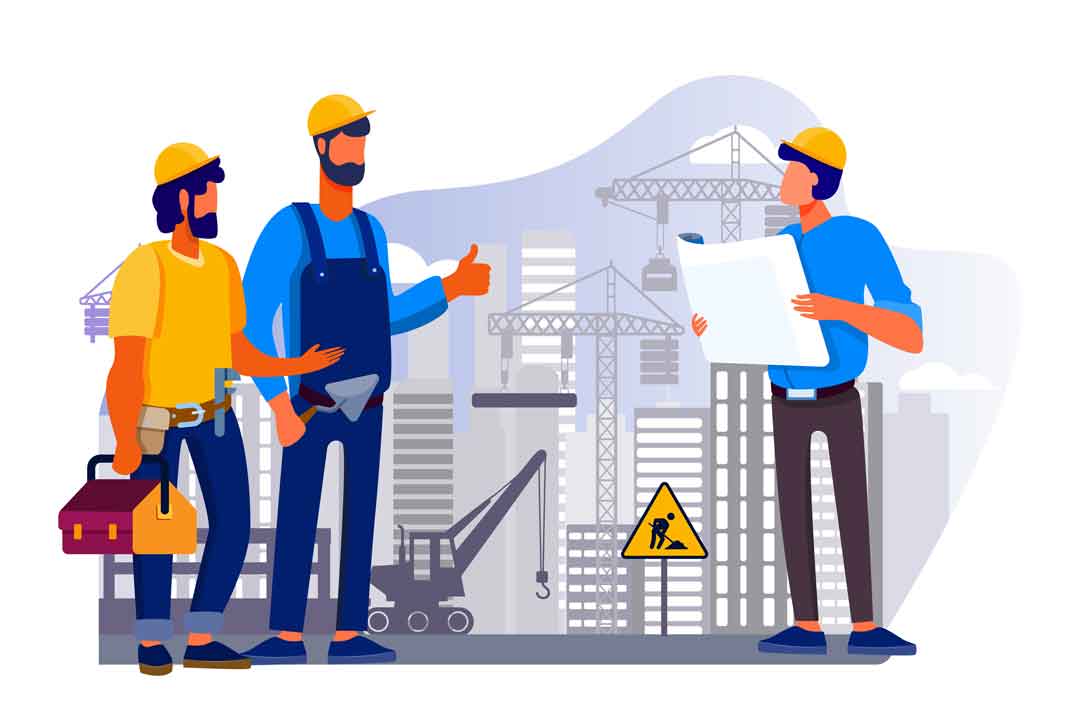Accidents happen in no specific time and place, and the chances of it happening are even higher in a workplace where there is a potential risk occurrence. The construction and industrial workplaces are two of the most high-risk work environments which OSHA, or the Occupational Safety and Health Administration, recognizes.
Many reports show a relatively high percentage of work accidents, especially in the construction and industrial workplaces. Fall accidents are the topmost injury-causing accidents in these jobs. However, there are steps and methods in mitigating the risks in hazardous workplaces. It’s no wonder that the OSHA is very stringent in implementing the standard guidelines regarding the installation of fall protection systems.
Guard and handrails, for one, are the best and most recommended choice by OSHA. That’s why it’s imperative to know the importance of their functions in the workplace. Even more so, employers and workers alike need to understand these safety features’ critical roles in providing safety in a high-risk work environment.

Understanding Guardrails And Handrails
It is essential to identify the difference between the two to understand their critical roles better. To those who aren’t familiar with the intricacies of this industry, guard rails and handrails are just two of the different types of fall protection systems.
Guard rails are protective guarding or boundaries to prevent or deter access to a dangerous or an off-limits area. On the other hand, handrails are a rail system that provides stability or support. The confusion between these two lies in what the current industry calls it, and it’s where the two terms are used interchangeably and unconsciously.
The installation of the two aims to prevent possible deadly falls or slipping, which is, unfortunately, one of the primary reasons for injury in the workplace. However, the term “guard rails” depends on what industry it’s used on as its purpose differs from one to the other.
Fall protection systems, such as guardrails, are a must in a hazardous workplace. If you are interested in sourcing quality railings for your building construction projects, you can request a quote for industrial removable safety railing here and compare prices using it. With it, you wouldn’t have trouble sourcing for these fall protection systems, allowing you to find the best system fit for your workplace.
OSHA Required Specifications
Now that we have clearly defined the difference between the two, let’s also understand and learn OSHA’s engagement on guardrails and handrails. According to OSHA’s standard guidelines, both are considered as “guardrails.” OSHA is the primary organization that focuses and prioritizes the safety of the work environment and the people working in it.
According to OSHA standard guidelines stipulated in 1910.28(b)(15), if an employee is working on a surface that is 4 feet or more off the ground, fall protection systems must be installed. These systems include handrails, safety nets, and other forms of fall protection systems.
Fall protection systems, such as guardrails, should also follow OSHA’s specifications, such as:
1910.29(b)(1):
A guardrail system should be 107 cm with an estimate of 8 cm above the walking/working surface. The top edge height can exceed up to 114 cm, given that the guardrail system meets the other criteria stated in OSHA standard guidelines.
1910.29(b)(2)(iii):
Balusters, also called an intermediate vertical member, should be installed no more than 48 cm apart.
1910.29(b)(3):
A guardrail system should be capable of holding a force of 200 pounds without failure even if the applied force is given in any direction.
1910.29(b)(6):
OSHA also emphasizes the texture of the guardrail systems. The surface should be smooth to avoid snagging of clothing, lacerations, punctures, and other injuries that can harm an employee. Although guardrail surfaces should be smooth, they should provide enough grip and avoid being too slippery to hold on to.
1910.29(b)(11):
If there are holes in the workplace, guardrail systems should be installed on all sides or edges of the holes to prevent any falling accident.
1910.29(b)(14):
On ramps and runways, guardrail systems should also be installed on both unprotected sides or edges.
Other pertinent and detailed information regarding guardrail system specifications is all found in OSHA standard guidelines. OSHA also emphasizes that every employer should follow all the regulations. Failure to do so will put their employees at risk. Employers who also fail to implement such precautions can and will be held liable through legal action.
OSHA emphasizes that employers’ full-pledged coordination and strict implementation of the guidelines have a lot to do in keeping their work environment safe. With this, no worker will be at risk in the workplace, lessening the chances of workplace injury or death.
Installation Benefits:
There are a lot of benefits to having a guardrail and handrail systems installed in the workplace. Even if the two are different when it comes to their purpose, both have a common goal: prevent any accident from happening.
Here are some benefits of having a guardrail system in the workplace.
1. Guardrail systems are most commonly installed on rooftops, where fall accidents are likely to happen. It keeps out further unauthorized access and acts as protection if workers need to access the area.
2. Non-penetrating guardrail systems are best for areas that need temporary restriction and protection. Non-penetrating guardrails keep the rooftop intact while following OSHA specifications.
3. The handrail system acts as support, especially when safety is most concerned with accessing high places. This will act as secondary protection as workers directly access anything stable to keep their weight balanced.
4. Guardrail systems also signify and prohibit further access to high-risk or dangerous zones in a workplace, such as areas in an industrial setting where large machinery is operating.
Takeaway
The construction and industrial workplace are best known for their high-risk and danger prone environment. The people working in it are highly vulnerable to any possible accident. With the strict implementation of OSHA’s standards, employers are mandated by the law to follow their guidelines when it comes to workers’ and workplace safety. Guardrail and handrail systems must be given importance as they play an integral part in providing protection and preventing accidents from happening.
About the Author:
Richard Perkins has been writing blog articles that mainly focused on building construction safety, engineering, and architectural projects. He’s keen on the details of every structure and loves putting it into words. He usually spends his weekend break by riding his big bike and going for a long ride along the coast. Richard is a father of three beautiful girls and married to his high school sweetheart.
